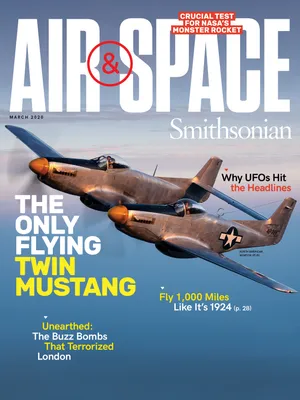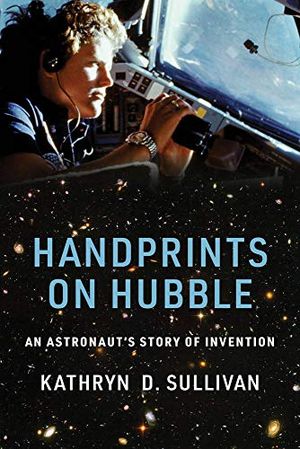The People Who Made Hubble Great
A spacewalking pioneer reports on the behind-the-scenes work that enabled the Hubble Space Telescope to wow the world.
:focal(1442x1042:1443x1043)/https://tf-cmsv2-smithsonianmag-media.s3.amazonaws.com/filer/3d/5e/3d5e9d3b-c5a0-4841-a496-29657ec7e557/16503221172_35d05ebc40_o.jpg)
Former astronaut Kathryn D. Sullivan was part of the space shuttle crew that put the Hubble Space Telescope into orbit on April 25, 1990. Before Hubble could be launched, however, Sullivan, her crewmate Bruce McCandless, and dozens of engineers spent thousands of hours on Earth working to ensure that the telescope could be maintained and repaired in orbit. That element of maintainability has made the telescope far more powerful today than when it was launched 30 years ago. Sullivan’s memoir, Handprints on Hubble, not only examines the work conducted on the telescope but also offers an engaging account of her grand career as one of NASA’s first six female astronauts. Sullivan spoke with Air & Space senior associate editor Diane Tedeschi in January.
Air & Space: Why did you decide to write this book?
Sullivan: This chapter of Hubble history was missing in everything I’ve ever read about Hubble, and the huge contributions of the maintainers—if mentioned at all—was reduced to: “Hubble was designed from the outset for maintenance.” I wanted to give the engineers involved their rightful place in the historical record.
You are the first American woman to walk in space. Did the history-making nature of this accomplishment loom large as you executed the spacewalk?
It never entered my mind. I was solely focused on mastering spacesuit operations and the work we had to do outside.
What do you remember about that day in 1986 when you heard the devastating news about the destruction of Challenger?
As I recount in my book, I remember the moment I heard about it vividly. The remainder of that day is a much fuzzier memory of pain and sadness.
Of the three space shuttle missions you flew, which one provided the most memorable experience?
That’s like asking which of my children I love the most. Every spaceflight provides loads of memorable experiences.
Was it disappointing when you weren’t selected for the Hubble’s 1993 repair mission?
Yes, that stung for a while.
The NASA astronaut corps is an elite group. Did you notice any commonalities or shared traits among your fellow astronauts?
I’d say the common traits were that we were all very purpose-driven, goal-oriented, competitive, and disciplined.
Astronauts seem to handle pressure well—why is that?
Because it’s essential to our success and survival. Spaceflight involves huge amounts of energy, extremely high velocities, very expensive hardware, and human lives. Every decision and action can have immense consequences, and we—as decision-makers and actors—must be able to remain focused and calm.
Do you miss being an astronaut and flying aboard the space shuttle?
I miss being part of that unique, high-performance team, though I’ve been able to create similar esprit-de-corps and peak performance in organizations I’ve led since leaving NASA. Most of all, I miss the delight of microgravity and the spectacular views of Earth.
Handprints on Hubble: An Astronaut's Story of Invention (Lemelson Center Studies in Invention and Innovation series)
The first American woman to walk in space recounts her experience as part of the team that launched, rescued, repaired, and maintained the Hubble Space Telescope.
A Note to our Readers
Smithsonian magazine participates in affiliate link advertising programs. If you purchase an item through these links, we receive a commission.

